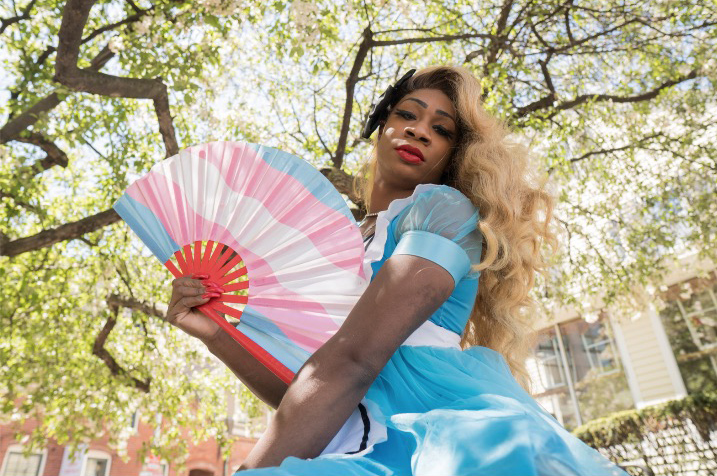Professor Kiera Vaclavik explores identity and ‘queer wonderlands’ in the works of Lewis Carroll, in conjunction with the event, How Queer Everything is Today!, part of the Being Human Festival, in partnership with Queen Mary, University of London.
The immense appeal of the Alice books is evident in their countless re-enactments, reinterpretations and reimaginings, in anything from cartoons to stage and screen performances. Reimagining Alice has long involved casting men and boys in the central role, often as satirical send-ups, which reinforced rather than challenged gender norms. But male performance wasn’t always about mockery. In stagings of the books in schools and other organisations right up until the 1970s, boys often played the part of Alice, and did so ‘straight’ or naturalistically.
These ‘boy Alices’ were never meant to rock the boat, but they did enable future scholars, soldiers, husbands and fathers to inhabit a female character – for the time of the rehearsals and performances at least. Recently, more radical reimaginings and appropriations of Carroll’s works have been produced by members of the LGBTQ+ community. These reinterpretations tap into and highlight the many and varied queer aspects of Alice: interrogations of identity, and resistance to facile labelling, are at the heart of the Alice books – it’s often unclear what, let alone who, Alice is.
This illustration by John Tenniel from Through the Looking-Glass, and What Alice Found There (1871) features chess pieces in unisex dress. Alice also occupies a sartorial middle ground: her signature pinafore, simple strapped shoes, long, loose hair and striped stocking were all widely worn by boys at the time.
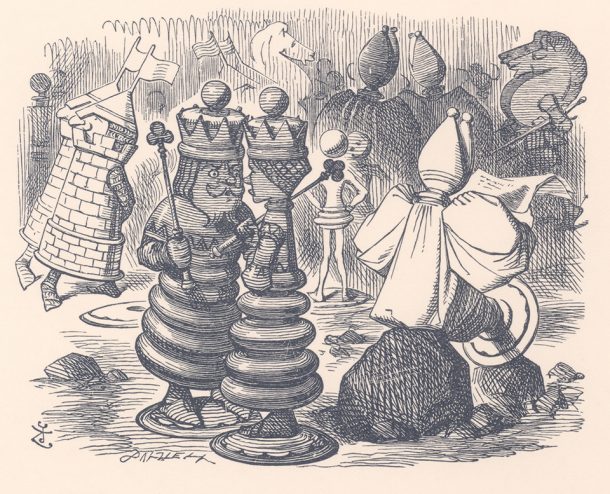
If Wonderland stands for nonsense, insanity (inanity) and topsy turvy, Alice functions as the emblematic, readily recognisable little girl. This 1968 book cover draws on a 1908 version of the book with illustrations by K.M Roberts, to cast Harold Wilson – then British prime minister – in Alice’s role. The pipe-smoking, power-wielding politician is cut down to size, simultaneously emasculated and infantilised. Alice’s own femininity (and youthfulness) is reinstated even as it seems to be erased.
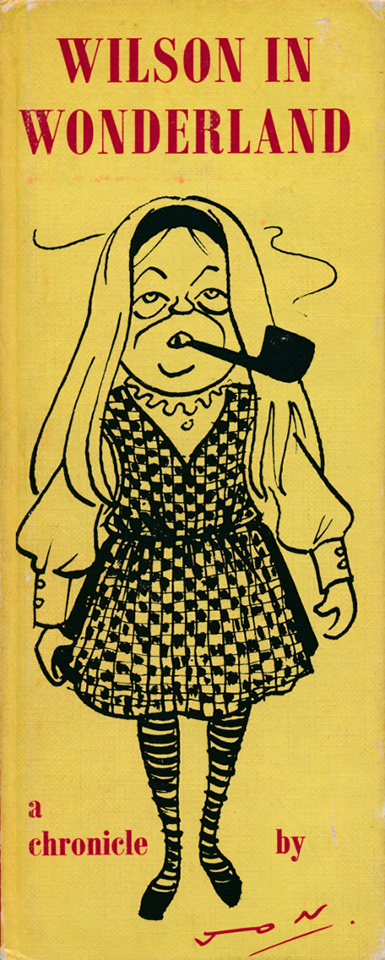
Like other pre-existing cartoon characters such as Donald Duck or Bart Simpson – Dreamy Daniel enters a version of Wonderland, replacing Alice, in this 1913 cartoon. The result of the shift in gender – and genre – is a zingier, zanier, more physical and boisterous narrative. Works like this one often reinforce rather than revise gender norms.
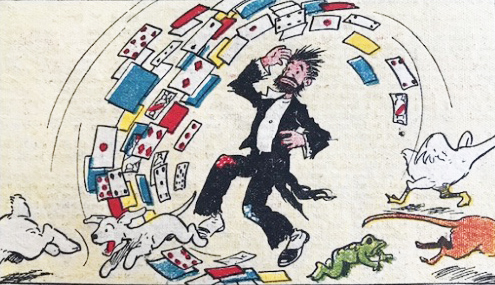
School and newspaper reports, as well as photographs like this one below from 1930, show that from the 1870s and for the next hundred years, male performances of the Alice books were fairly common. They were absorbed into a longstanding tradition of all-male performances of classical theatre and Shakespeare in British schools stretching back to the Tudor period.
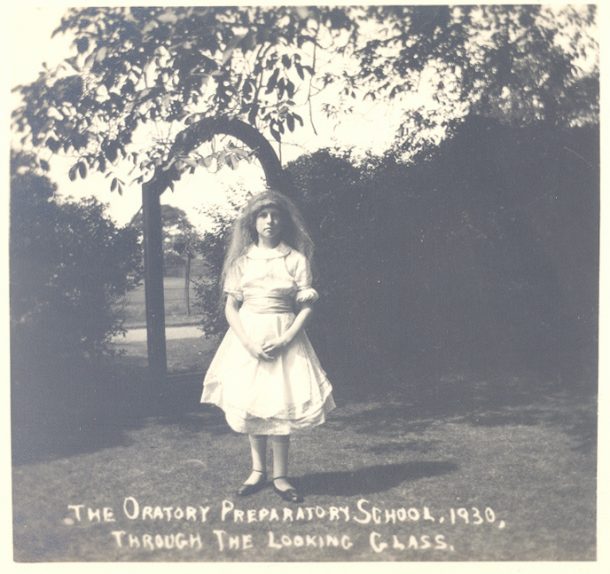
Born in Carlisle in 1893, Joseph Harold Rigg (seated left in the photograph below) played Alice in 1907 as part of a performance by the Carlisle Cathedral choristers. After Carlisle Grammar school, Rigg went on to Emmanuel College, Cambridge and served in both world wars. He married in 1939 and had at least one son, and died in Bombay Hospital in 1947.
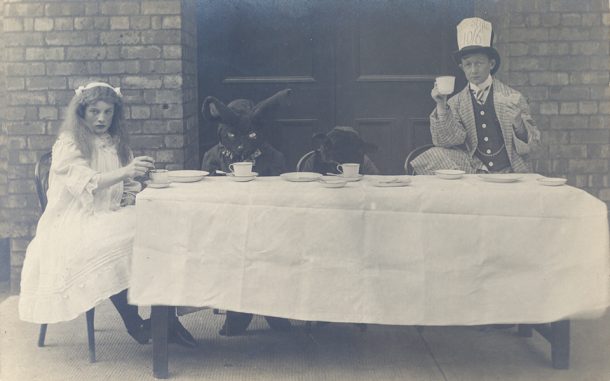
Written by queer author Juno Dawson, this 2020 Young Adult adaptation features a trans protagonist negotiating life at school and its social scene. Asked about the inspiration for the work, Dawson responded that having seen an exhibition on Carroll’s work, she “realised we have a globally agreed idea of what this character looked like. I began to wonder what I could bring to the table. There’ve been Japanese Alices and black Alices. Would people accept her if she was trans?”
Lilly Rose Valore is a Vogue historian, dancer and trans activist as Alice in Alice in Rainbowland. This virtual work by dance project ‘Queer Bodies in Motion’ is intended for a family audience and aims to both build awareness about discrimination and to celebrate LGBTQIA+ identity.
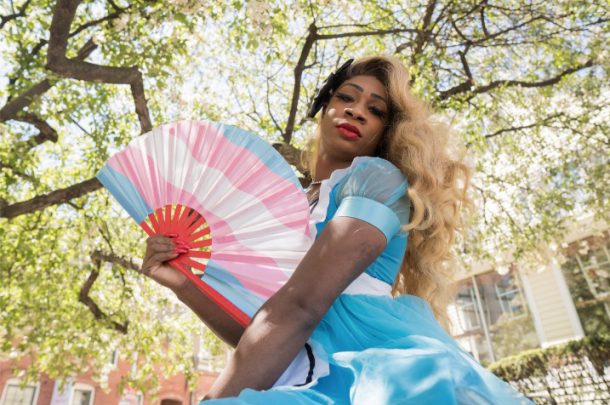
See Alice: Curiouser and Curiouser at the V&A South Kensington until 31 December, 2021.
